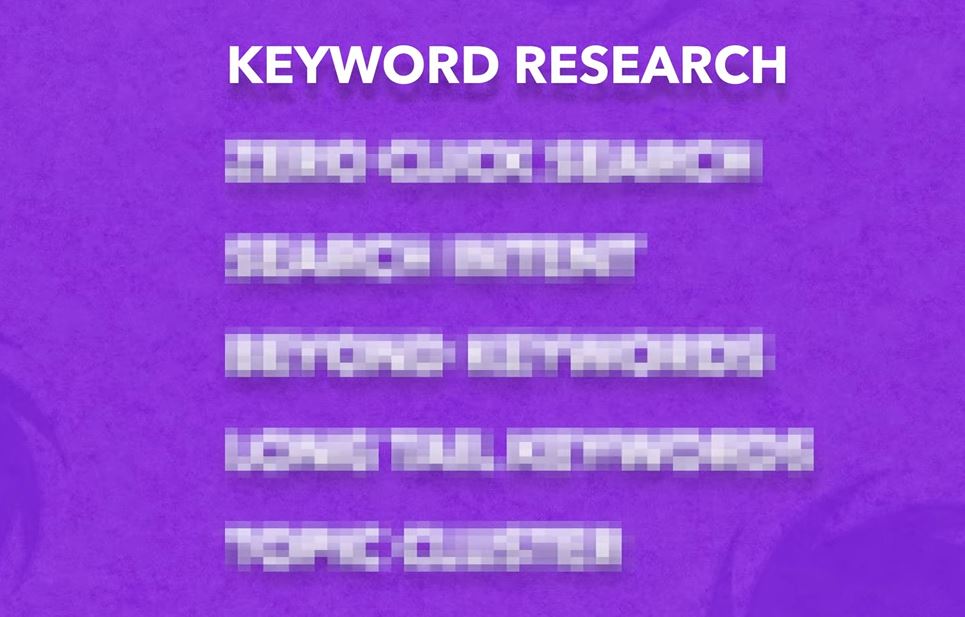Today's SEO landscape is shifting. Simply targeting keywords won't bring the results you're looking for. User behavior, search engine algorithms, and the rise of AI are changing the game. Let's explore the new SEO strategies that are essential for success in 2025 and beyond.

The Rise of Zero-Click Searches
Have you noticed how often you get answers directly on Google without clicking a website? This is the impact of zero-click searches. Features like featured snippets, knowledge panels, and AI-powered overviews provide instant answers, reducing the need to click through. While this might seem detrimental to website traffic, it presents a unique opportunity: brand visibility directly within search results. Even without a click, your brand can gain recognition and establish authority.
Understanding Search Intent
Search engines are becoming increasingly sophisticated at understanding why a user is searching. They're not just matching keywords; they're aiming to satisfy the user's underlying need. Is the user looking for information, a product to buy, or a specific service? Aligning your content with search intent is paramount. Tools like Semrush's SEO Content Template can analyze top-ranking pages and provide valuable insights into what resonates with users searching for specific keywords.
Example: Organic Skincare
Let's say you sell organic skincare products. You target the keyword "best organic skincare products." Semrush's tool reveals that top-ranking pages prioritize informational content about skin types, benefits, and comparisons, rather than just product listings. This tells you that users searching for this keyword are likely in the research phase. By creating content that addresses their questions and compares products, you align with their intent and increase your chances of ranking higher.
User Engagement Matters
How users interact with your content is a strong signal to search engines. Metrics like bounce rate, dwell time, click-through rate (CTR), and pages per session indirectly indicate content quality. A high bounce rate suggests users aren't finding what they're looking for. Low dwell time indicates a lack of engagement. Poor CTR implies your content isn't appealing in search results. And a low number of pages per session suggests users aren't exploring your site further.
| Metric | Meaning | Impact |
|---|---|---|
| Bounce Rate | Percentage of users who leave after viewing only one page. | High bounce rate negatively impacts rankings. |
| Dwell Time | How long a user stays on a page. | Longer dwell time positively impacts rankings. |
| Click-Through Rate (CTR) | How often users click your link in search results. | Higher CTR improves visibility and rankings. |
| Pages per Session | Number of pages a user views in one visit. | More pages per session indicate higher engagement. |
Analyzing these metrics can reveal areas for improvement. Tools like Google Search Console, Google Analytics, and Semrush's Site Audit can help identify technical issues impacting performance, such as slow page speed or internal linking problems.
The Power of Long-Tail Keywords
Long-tail keywords are longer, more specific phrases that precisely reflect user intent. They often have lower search volume but higher conversion rates. For example, "best all-natural skincare products for sensitive skin" is more specific than just "skincare." Targeting long-tail keywords allows you to connect with users who are further along in the buying process and know exactly what they're looking for.
Benefits of Long-Tail Keywords
- Higher conversion rates: Users are closer to making a purchase.
- Less competition: Easier to rank higher.
- Stronger relevance to search intent: Provides exactly what users are searching for.
- Content opportunities: Allows for creating targeted, niche content.
Building Content Authority with Topic Clusters
Establishing content authority is about becoming a go-to resource on a specific topic. A topic cluster strategy involves creating a central "pillar page" that covers a broad topic. Then, create supporting articles that delve into specific aspects of that topic, linking back to the pillar page. This interlinked structure helps both users and search engines understand the depth and breadth of your expertise, boosting your topical authority.
In conclusion, successful SEO in 2025 and beyond requires a shift in mindset. While keywords remain important, they are just one piece of the puzzle. Focus on understanding search intent, creating engaging content, leveraging long-tail keywords, and building content authority. By adopting this holistic approach, you can achieve higher rankings, drive targeted traffic, and establish a strong online presence.
